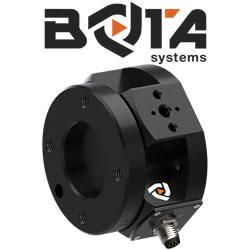French manufacturing expertise showcased on the TraceParts platform with Poral’s products based on the metal powder sintering technology
The CAD models for the Metafram® self-lubricating bearings can already be downloaded from the TraceParts.com platform.
Saint-Romain, France; February 17, 2021 - Poral, an expert in manufacturing sintered solutions, has chosen to publish its parts on the Smart-Publishing platform from TraceParts, a world-leading supplier of 3D content for engineering.
Previously known as Sintertech, Poral manufactures metal filters, complex automotive parts and Metafram® self-lubricating bearings. Poral's products are engineered to withstand the harshest environments, since they are used in the nuclear, aeronautical and robotics industries.
One of the main reasons for Poral's decision to publish its parts on the TraceParts platform is to reach out to its end customers. But that is not the only motivation that prompted Poral to change its strategy:
"Our choice focused on the TraceParts solution, because it's so easy to look up parts online as a user. The number of people registered on the platform and the straightforward discussions with our contacts at TraceParts also tipped the scales in their favor." - explains Tristan Romano, Sales Engineer at Poral.
The parts from the Metafram® range have been published on the TraceParts.com platform with the Smart-Publishing solution. Poral's teams published their CAD models themselves using this dedicated solution.
"The Smart-Publishing tool features a fairly easy learning curve. It hardly took any time at all to upload everything, since we already had our 3D files, and their technical support teams were so efficient and responsive." - adds Tristan Romano, Sales Engineer at Poral.
Poral can now update its existing parts on TraceParts.com whenever required or add new products when requested by its customers and prospects.
Featured Product

Bota Systems - The SensONE 6-axis force torque sensor for robots
Our Bota Systems force torque sensors, like the SensONE, are designed for collaborative and industrial robots. It enables human machine interaction, provides force, vision and inertia data and offers "plug and work" foll all platforms. The compact design is dustproof and water-resistant. The ISO 9409-1-50-4-M6 mounting flange makes integrating the SensONE sensor with robots extremely easy.
No adapter is needed, only fasteners! The SensONE sensor is a one of its kind product and the best solution for force feedback applications and collaborative robots at its price. The SensONE is available in two communication options and includes software integration with TwinCAT, ROS, LabVIEW and MATLAB®.
